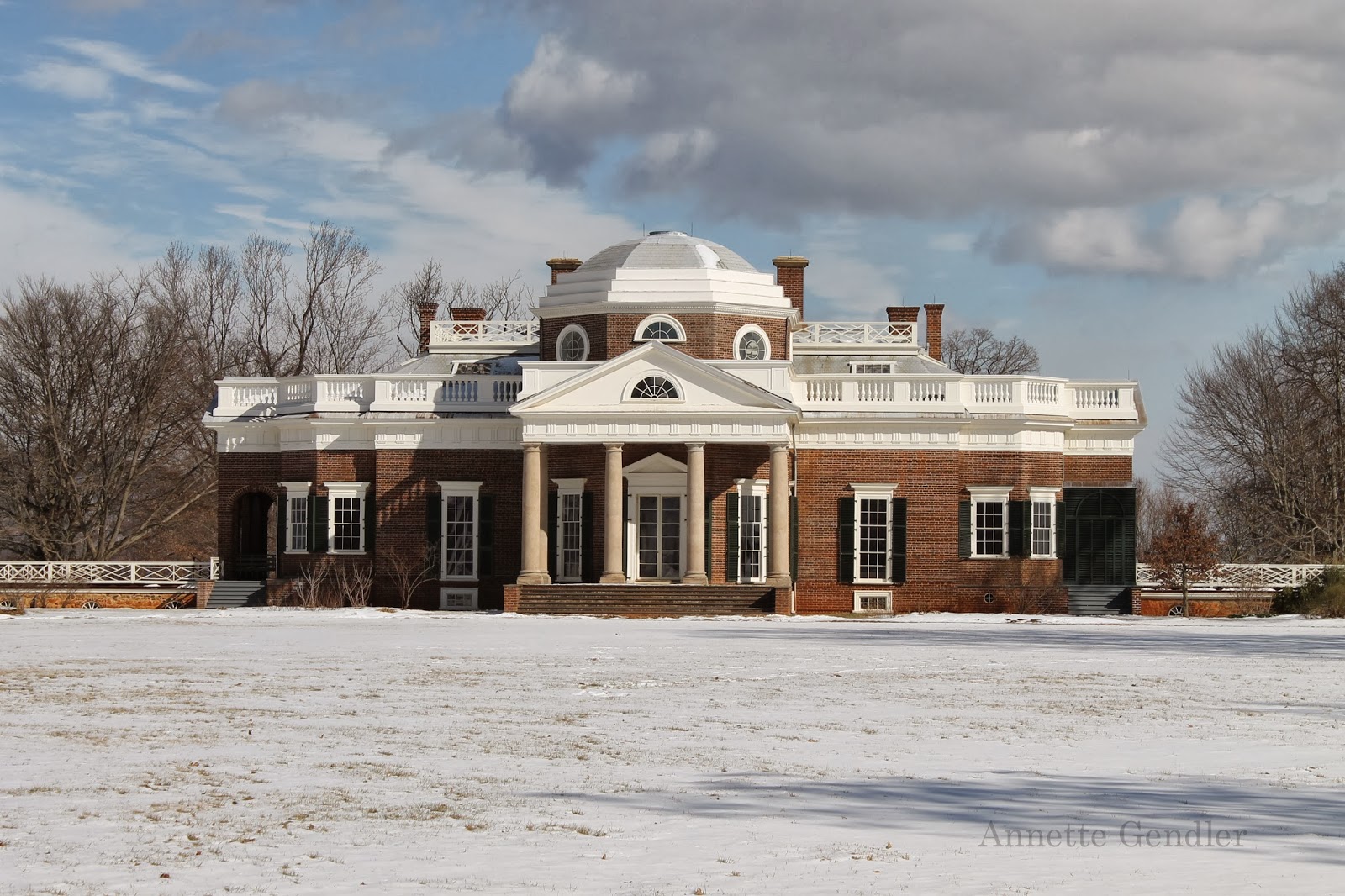
President Jefferson’s Monticello estate in winter
While I was at the VCCA, I visited Monticello, President Thomas Jefferson’s estate. It is near Charlottesville, a good hour’s drive from the VCCA. I happened to go on one of the coldest days there, when temperatures were hovering around 20F, which is pretty cold by Virginia standards.
Consequently, I had the great luck of having one of America’s most popular tourist attractions virtually to myself.
Only three other guys were on the “Behind the Scenes” tour of the mansion.
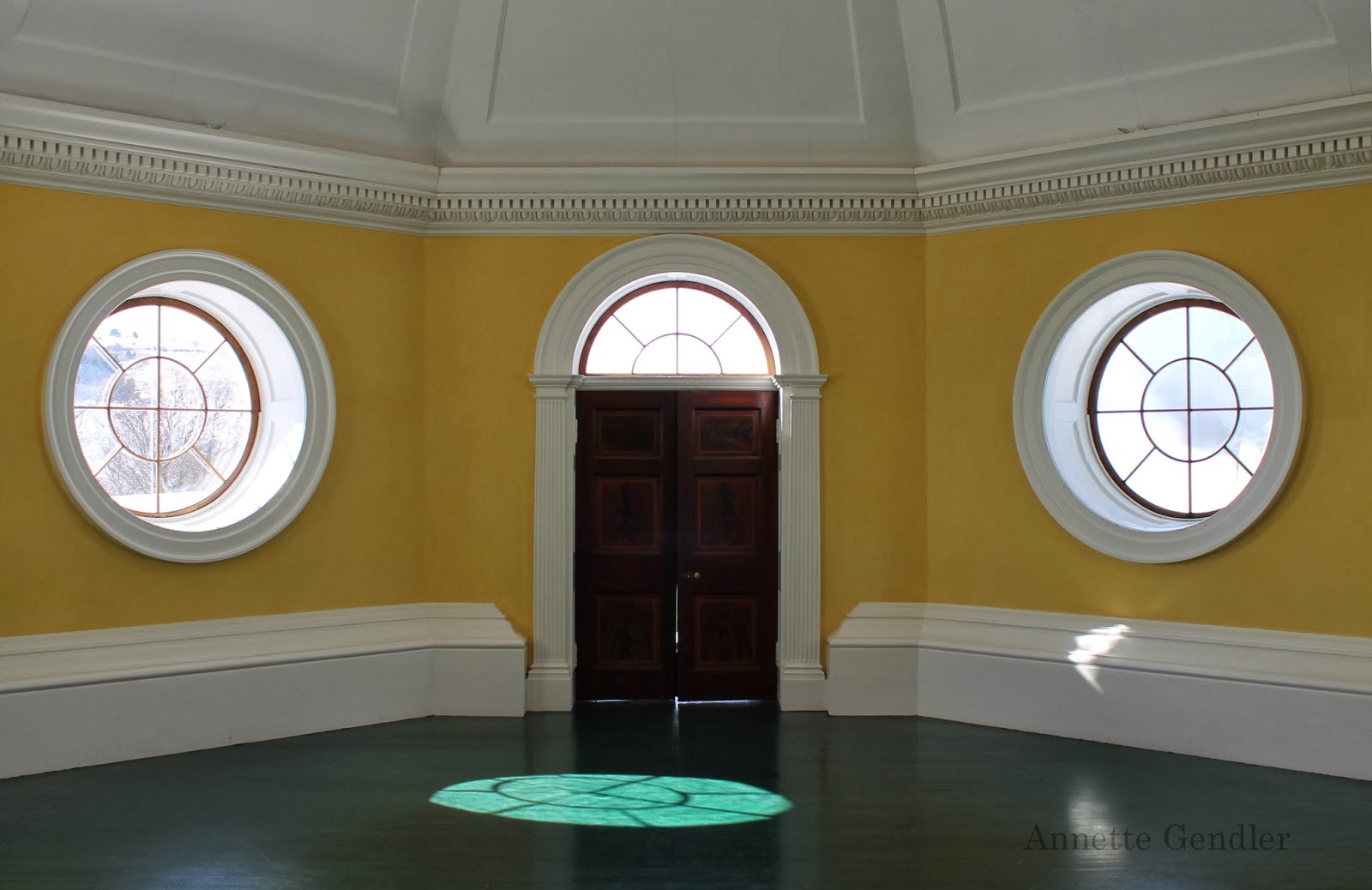
The Dome Room at Monticello
I didn’t fall in love with the house itself.
It struck me as the original McMansion – lots of wasted space and impracticalities, such as this Dome Room (this was the only inside shot I was allowed to take).
The Dome Room served no purpose. Jefferson simply wanted to construct a dome room because he had liked those he had seen in Europe. The door in the middle of this photo is purely for symmetry; it leads nowhere. Behind it is an attic room whose floor lies three feet lower; Jefferson’s granddaughters used to love to hide there from household duties and read. Like the other rooms on the third floor, the Dome Room is unheated. We were in our winter coats touring it. In the summer it gets stifling hot. the room is only reached by two flights of cramped stairs, so Jefferson hardly took visitors up there to show it off.
Another baffling impracticality from an otherwise seemingly practical man: the house has no grand stair case.
In Jefferson’s opinion, they were a waste of space. Rather, the stairs in both wings of the house are no wider than my not-so-wide hips. They wind up in a U, and the steps are nine inches high. Not fun to navigate, especially if you were an elderly person, like Jefferson’s sister, whose room was on the second floor. Mind you, his bedroom and study were on the first floor.
The first floor, especially Jefferson’s personal quarters, seemed more comfortable than the upstairs and featured clever conveniences such as his own personal privy (basically an indoor outhouse with a skylight). His Cabinet room, i.e. his study, still displays his polygraph, a early version of a copy machine, by which he was able to make a duplicate of whatever he was writing. I loved the ingenuity of that “double pen” device. The above is a scanned postcard of the Cabinet room as photos weren’t allowed.

Jefferson loved gadgets. This compass is connected to the weather vane on the roof and mounted under the Northeast portico so that family members could determine the direction of the wind without stepping outside.
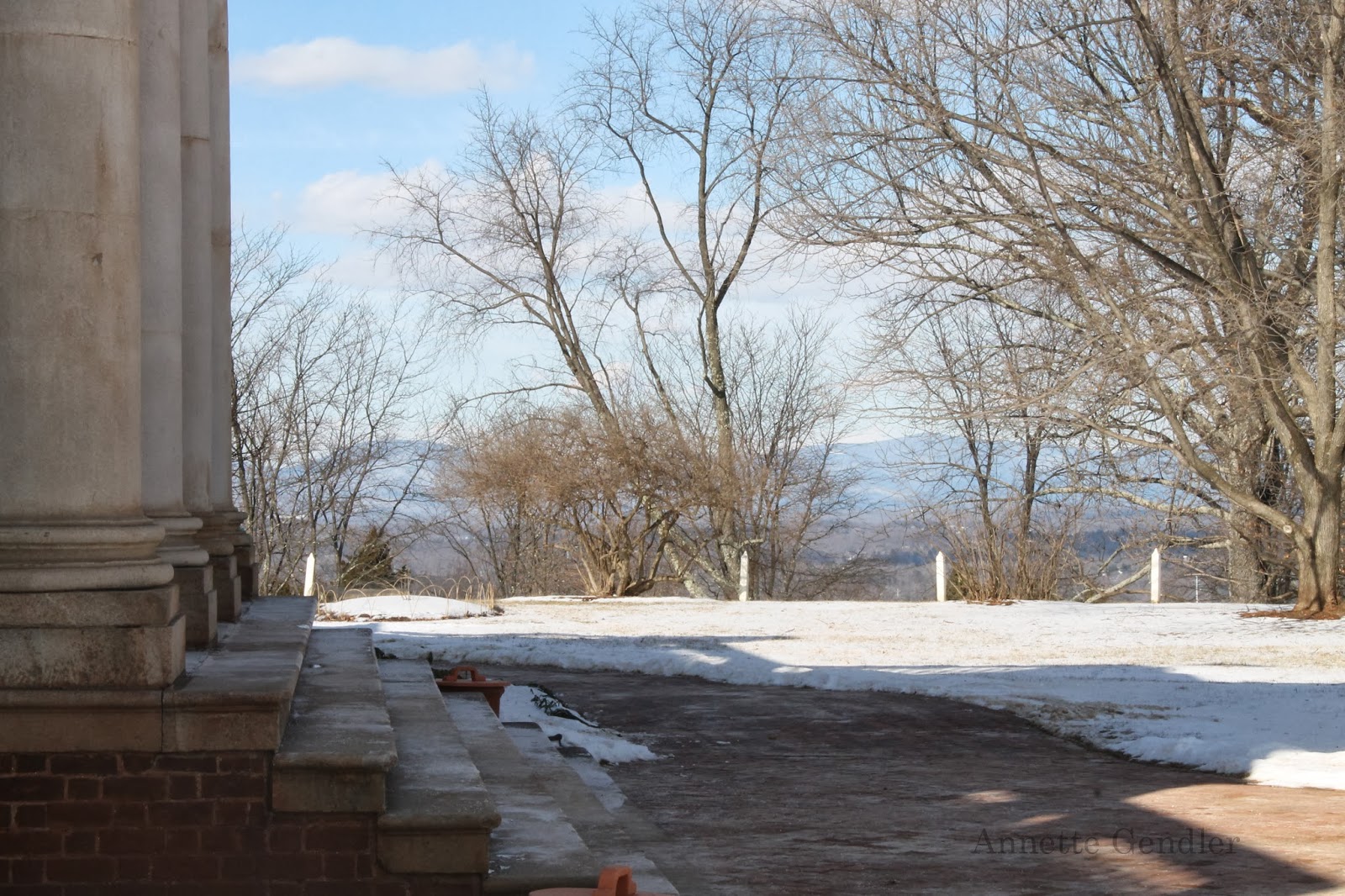
The outside, despite the cold, charmed me at Monticello. I had the grounds all to myself, covered in the silence of snow. Here the view of the Blue Ridge Mountains from the Northeast portico.
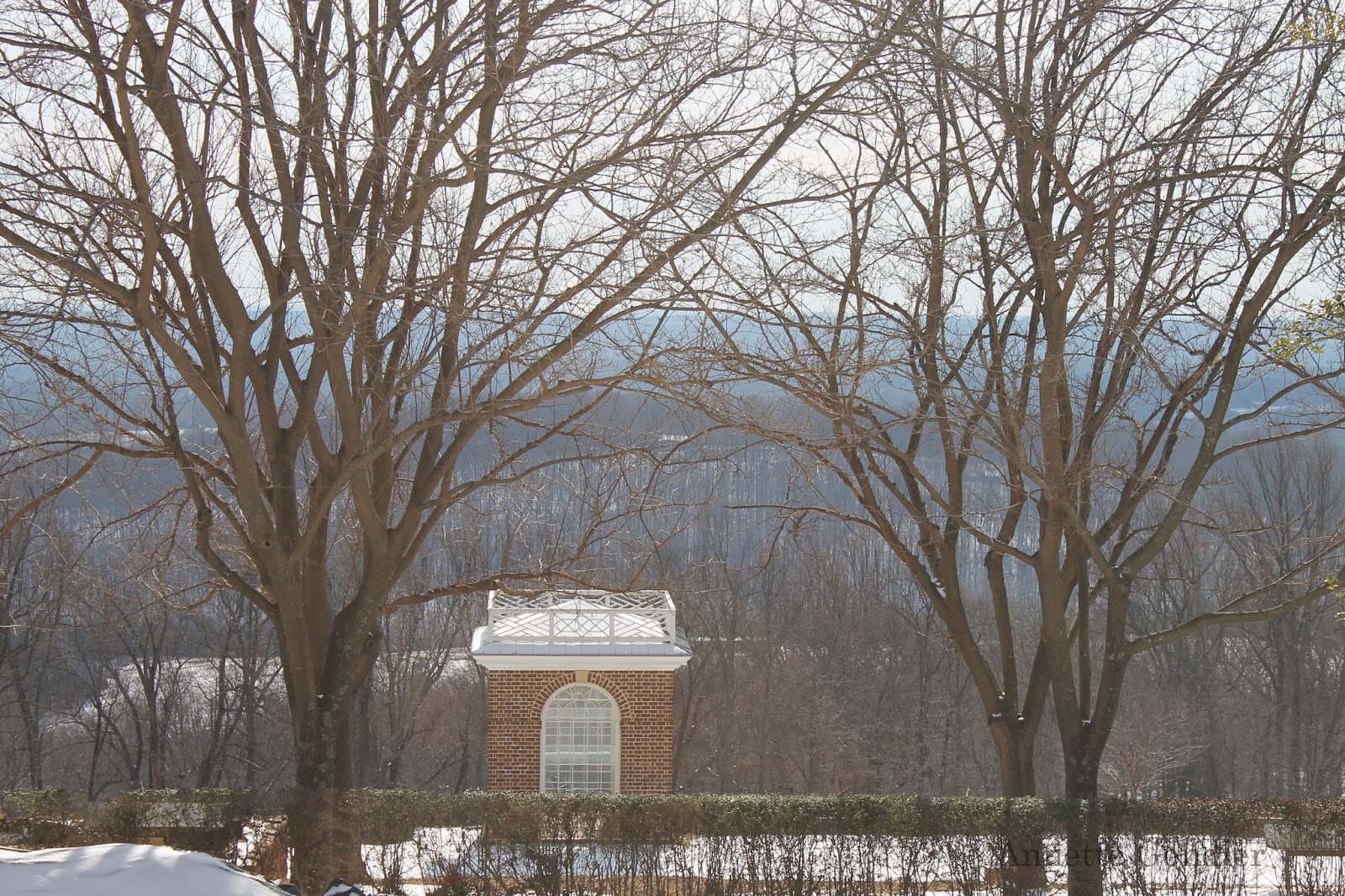
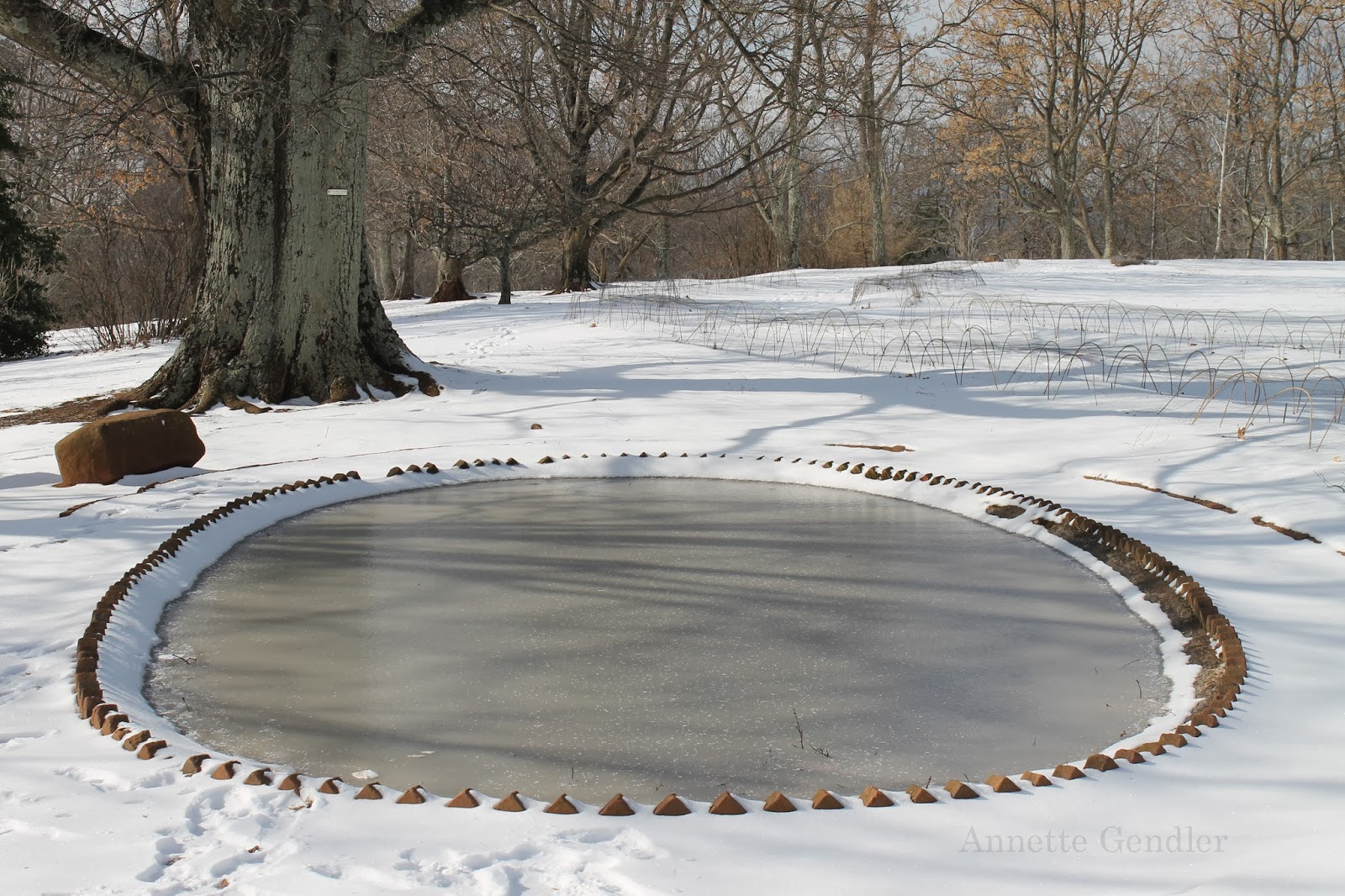
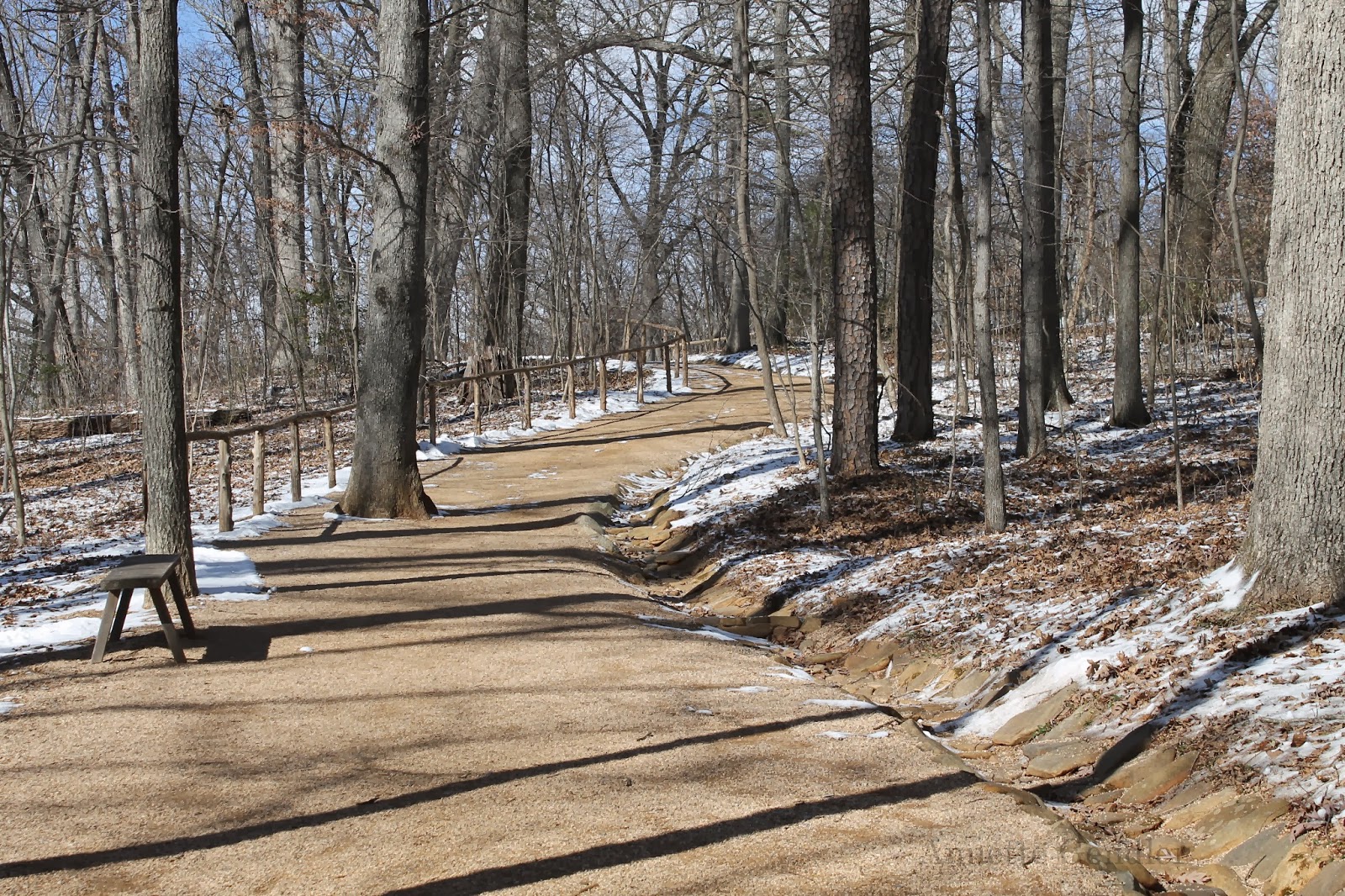
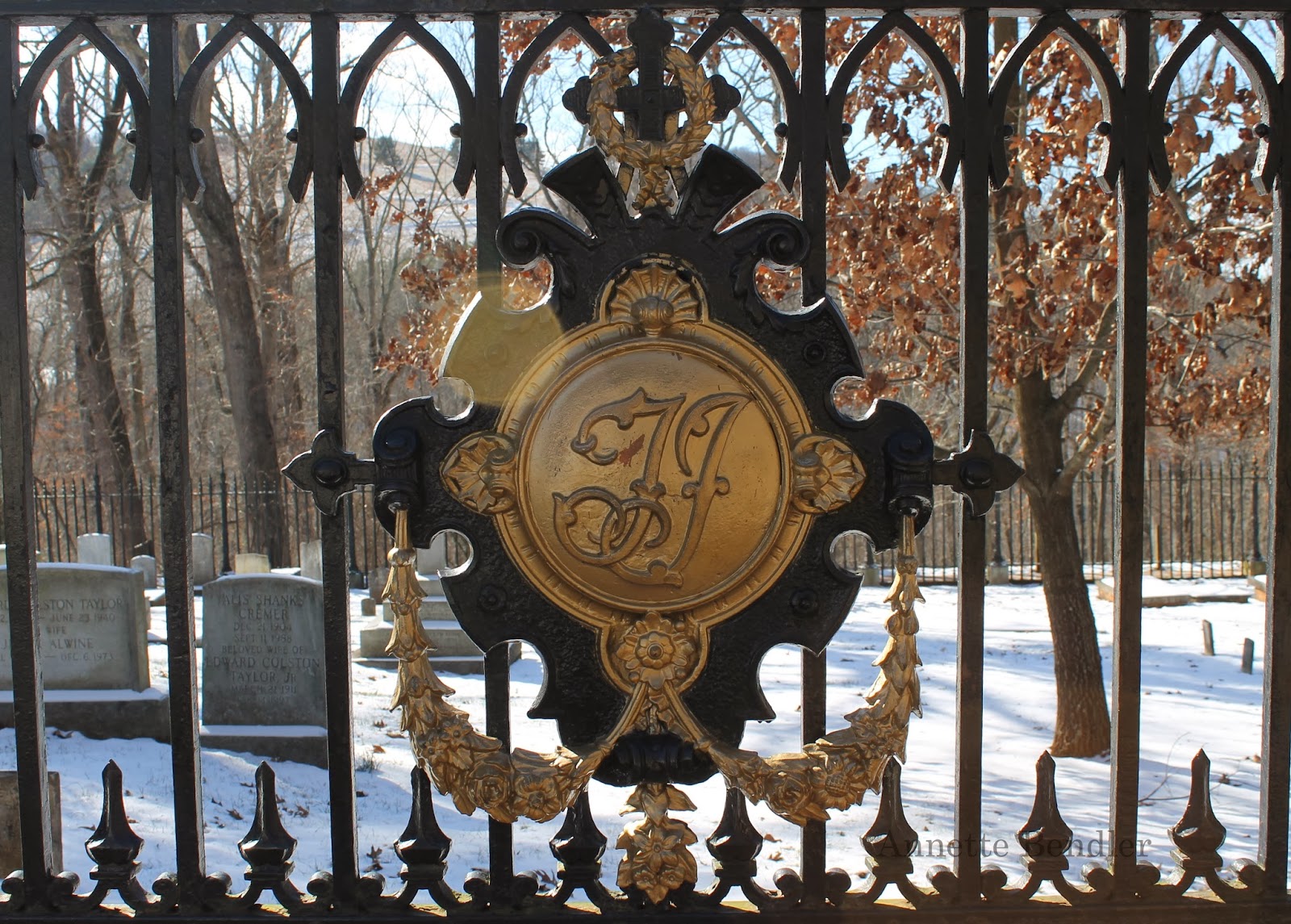
And then the ultimate silence, namely that of a graveyard, as I wandered down the trail that was supposedly closed due to wintry conditions. But, lured by the prospect of sun, snow and solitude, I kept on walking and happened upon the Jefferson Family Cemetery, silent behind the glory of this wrought iron gate.
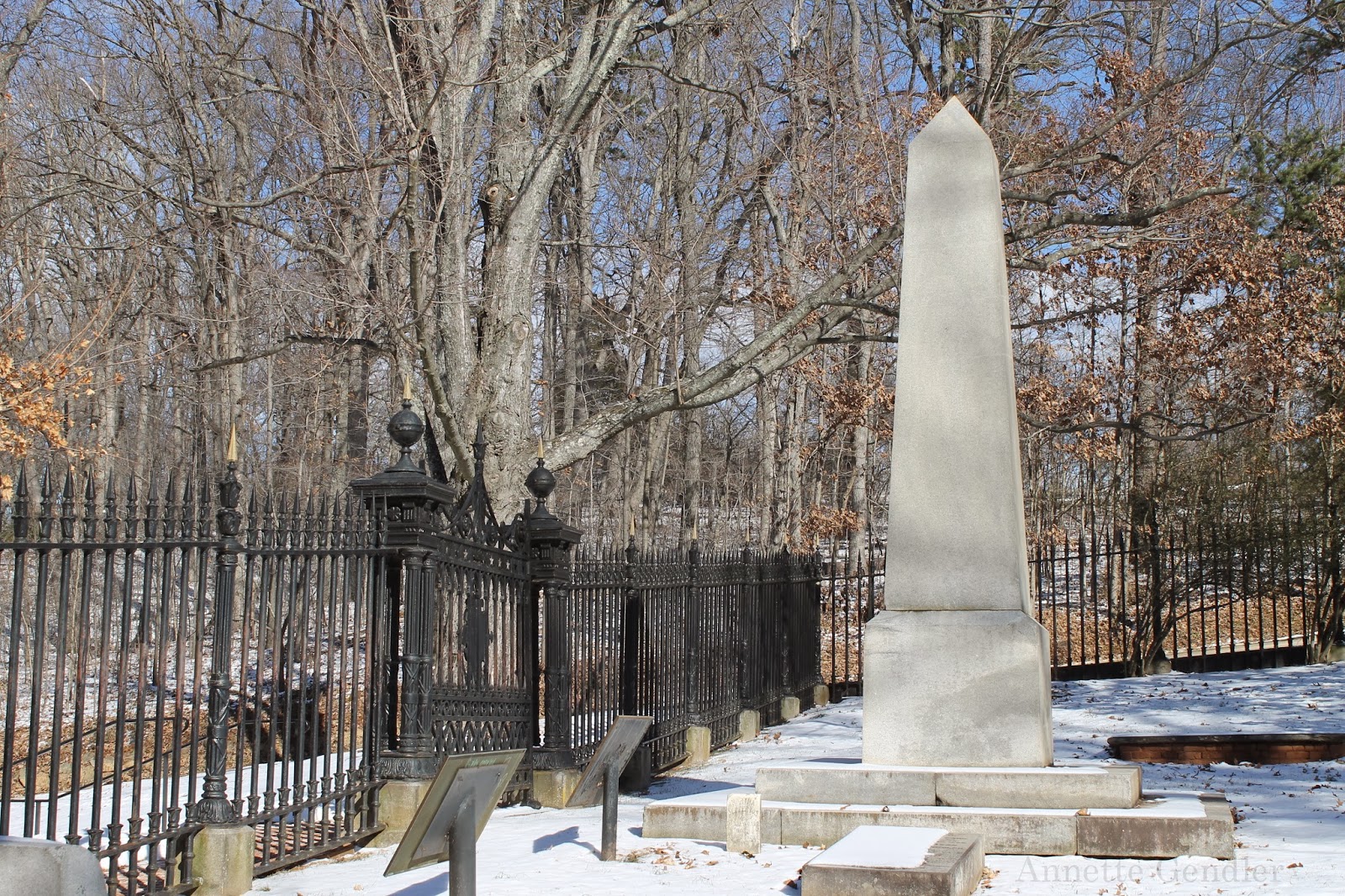



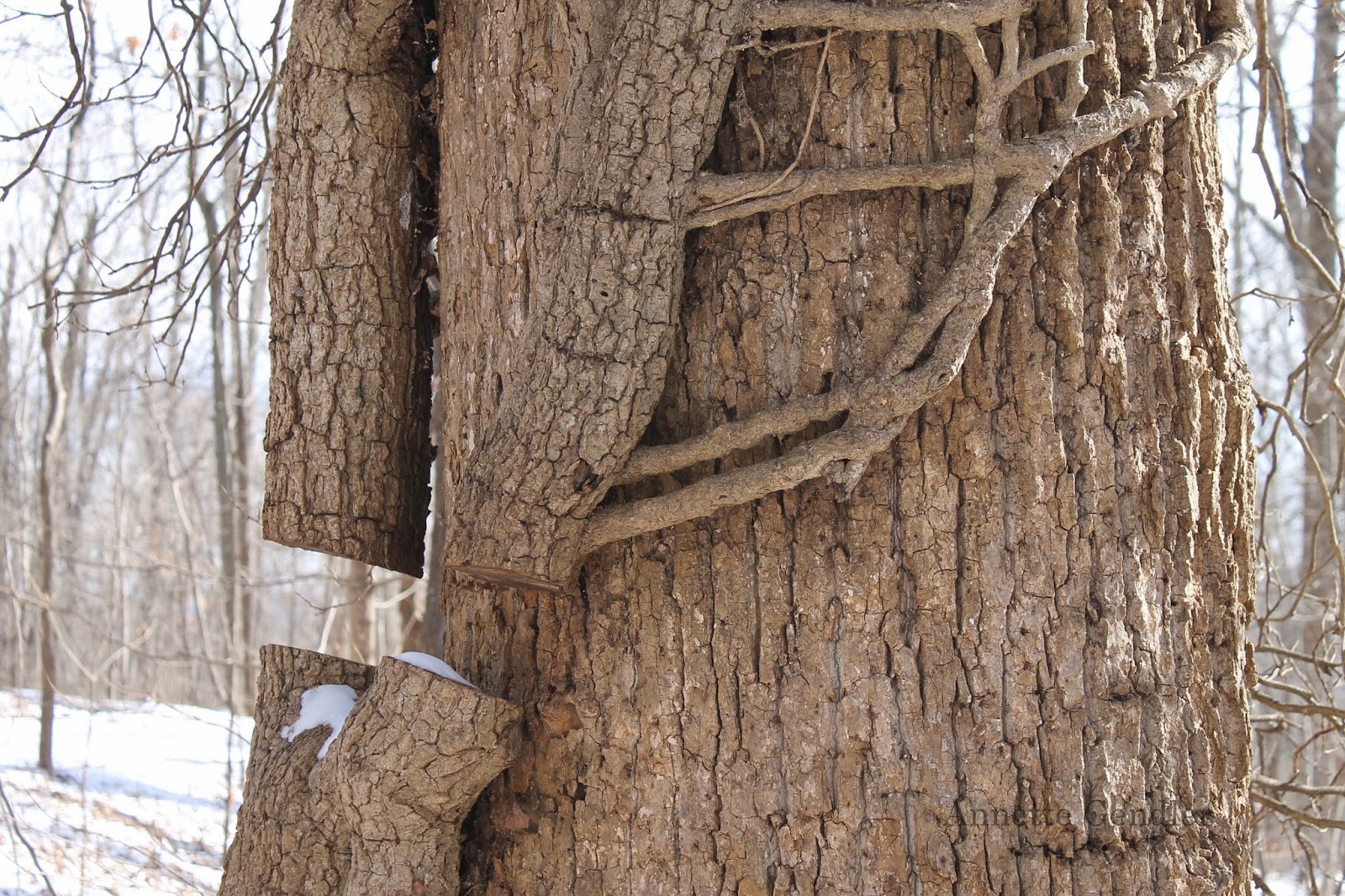

During Jefferson’s time Monticello was a large household bustling with visitors, relatives, and slaves. Now it is usually a busy tourist attraction. In my memory, however, Monticello is a slightly quirky mansion on a mountain top, solitary in the beauty of the wintry Blue Ridge Mountains.

Glad you took advantage of your solitude to take some great photos without having other tourists in the background.
Roger and I were the only people at Mt. Rushmore several years ago. It was just before closing on a chilly November evening and there was nobody around, not even security. It was an eerie feeling to be at one of the country's biggest tourist attractions and have only the mountain goats for company.
Jennifer – I think experiencing Mount Rushmore without other tourists is even more of a feat that experiencing Monticello on my own!
It's certainly quirky. I've always wanted to see it.
I'd say, given his taste for expensive things, that it's ironic that his gravestone is rather plain… but as I understand it he was considerably in debt later on in life thanks to his expensive habits.
William, Monticello is worth a trip, for sure. And you are right, Jefferson was in debt and after his death his daughter had to sell the estate.
I appreciate taking these virtual travels with you! I'm not a fan of McMansions, but I'm sure I would love the gadgets.
Steph, happy to oblige. Jefferson definitely came up with some interesting gadgets. I loved his clocks and the wine dumb waiter in the dining room.
My husband and I have visited Monticello in summer and fall but never in winter. Thank you for sharing your thoughts and photos. We like everything about it, both inside and on the grounds.
Barbara, I figure it must be splendid in spring, right?
I'm sure it would be. It was wonderful on a sunny day in October.
An interesting post that I enjoyed reading.
Thank you. Love love, Andrew. Bye.
Thanks, Andrew!